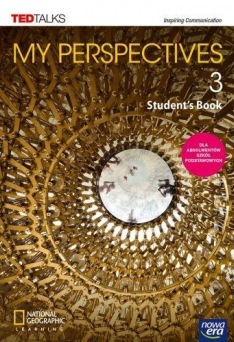II liceum
Język angielski
Lista zadań Strona 122
Strona 122
- Strona 4
- Strona 5
- Strona 6
- Strona 7
- Strona 8
- Strona 9
- Strona 10
- Strona 11
- Strona 13
- Strona 14
- Strona 15
- Strona 16
- Strona 17
- Strona 18
- Strona 19
- Strona 20
- Strona 21
- Strona 22
- Strona 23
- Strona 25
- Strona 27
- Strona 29
- Strona 30
- Strona 31
- Strona 32
- Strona 34
- Strona 35
- Strona 36
- Strona 37
- Strona 38
- Strona 39
- Strona 40
- Strona 41
- Strona 43
- Strona 45
- Strona 47
- Strona 48
- Strona 49
- Strona 50
- Strona 51
- Strona 52
- Strona 53
- Strona 54
- Strona 55
- Strona 56
- Strona 57
- Strona 59
- Strona 61
- Strona 63
- Strona 64
- Strona 65
- Strona 66
- Strona 68
- Strona 69
- Strona 70
- Strona 71
- Strona 72
- Strona 73
- Strona 74
- Strona 75
- Strona 77
- Strona 79
- Strona 81
- Strona 82
- Strona 83
- Strona 84
- Strona 86
- Strona 87
- Strona 88
- Strona 89
- Strona 90
- Strona 91
- Strona 93
- Strona 95
- Strona 97
- Strona 98
- Strona 99
- Strona 100
- Strona 102
- Strona 103
- Strona 104
- Strona 105
- Strona 106
- Strona 107
- Strona 108
- Strona 109
- Strona 111
- Strona 113
- Strona 115
- Strona 116
- Strona 117
- Strona 118
- Strona 119
- Strona 120
- Strona 121
- Strona 123
- Strona 124
- Strona 125
- Strona 127
- Strona 129
- Strona 131
- Strona 132
- Strona 133
- Strona 134
- Strona 135
- Strona 136
- Strona 137
- Strona 138
- Strona 139
- Strona 140
- Strona 141
- Strona 142
- Strona 143
- Strona 145
- Strona 147
- Strona 148
- Strona 149
1
Work in groups. The bar chart on this page shows the results of a survey into which sports people had done during the previous month. Discuss:whether anything surprises you. If so, why?why you think certain activities were more/less popular.which results you would expect to be similar and different where you live.
2
Work in pairs. Discuss which claims are supported (S) and not supported (NS) by the data in the chart.1 One fifth of those questioned used a gym in the month before the survey. 2 Swimming and diving are the most popular sports.3 One in 20 of those questioned played golf in the month before the survey.4 Just under five percent of those questioned cycle to and from work. 5 The popularity of certain sports may change depending on the season.
3
Work in pairs. You are going to carry out a survey. Choose a question or think of one that interests you. Your survey should have at least six options.• What activities have you done in your free time during the last two weeks?• What is your favourite type of film to watch at the cinema?• What subjects do you want to study at university?
4
Interview as many students as you can and take notes. Discuss your notes with your partner and then present the findings to the whole class.
5
Work in pairs. For your school project, you need to carry out a survey about sports activities of the residents of your city. You can choose one of three surveying methods presented in the photos below.Choose the method you like best. Justify your choice. Say why you reject the other options.Answer the questions.1 Are survey results always trustworthy? What may affect their reliability? 2 What use can organisations or companies make of the results of surveys?
6
Work in pairs. You have carried out a survey among students in your school regarding their ways of spending free time. You are discussing the results now. In your discussion, include the following aspects:some surprising results.how to present the results to studentsthe number of answers receivedconclusions from the results
